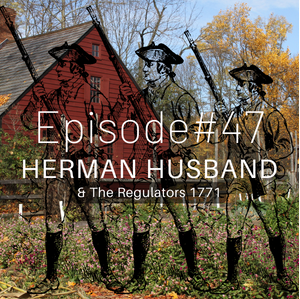Nestled between the mountain ridges of eastern Tennessee lies a region rich in history. An area visited by explorers, Native Americans, and early pioneer families, a land that speaks of traditions and folklore, stories, and legends. Sullivan County, North Carolina, was the second county located in present-day Tennessee to exist. After establishing Washington County in 1777, Sullivan County began the journey with North Carolina in 1779. The county’s name originated in honor of Major General John Sullivan, who was well-known for his victorious campaigns during 1779. Family historians researching this specific area for records before 1779 need to consider searching the Virginia land grants. The reason for this is due to portions of the Sullivan County boundaries were considered as part of Virginia and not North Carolina. The land in question would only include the area north of Holston River and the years before 1779. The earliest grant in this area, issued by the colony of Virginia in 1756 to Edmond Pendleton, consisted of 3,000 acres along Reedy Creek.
This article will highlight some of the early land grants issued by North Carolina between the years 1779 and 1790. Encouragement shared with everyone to use the search tool on the website to locate other articles and links for present-day eastern Tennessee.
Names of some of the smaller waterways are Bush Creek, Beech Creek, Level Creek, and Possum Creek. The dominant rivers and creeks are Beaver Creek, Reedy Creek, Sinking Creek, Horse Creek, and Indian Creek. Look for the names in association with the creek, streams, and rivers listed below. The land grants featured will encompass a series of articles in the coming weeks ahead.

Beaver Creek
- Bealer, George-250 acres, 1782-Grant#-93
- Bealer, John-266 acres, 1787-Grant#-453 also 300 acres, 1787-Grant#-456
- Bealer, Joseph-248 acres, 1787-Grant#-459
- Bealer, Willery-150 acres, 1782-Grant#-96
- Beatty, William-175 acres, 1782-Grant#-116
- Cole, Joseph-400 acres, 1787-Grant#-461 also 363 acres, 1789-Grant#-515
- Cole, Solomon-386 acres, 1789-Grant#-341
- Crockett, Joseph-85 acres, 1789-Grant#-544
- Gilbert, John-236 acres, 1787-Grant#-392
- Herklerod, Henry-625 acres, 1789-Grant#-518 also 640 acres, 1789-Grant#-514 also 640 acres, 1787-Grant#-461 also 295 acres, 1789-Grant#-519
- Johnson, John-211 acres, 1787-Grant#-436
- Lewis, Nathan-450 acres, 1787-Grant#-399
- Malone, John-200 acres, 1782-Grant#-90
- Malone, William-100 acres, 1782-Grant#-125
- McClennan, Abraham-504 acres, 1782-Grant#-63
- Miller, Daniel-600 acres, 1782-Grant#-43 also 248 acres, 1787-Grant#-454
- Myer, Martin-386 acres, 1789-Grant#-528
- Steel, Robert-400 acres, 1782-Grant#-104
- Wallace, Thomas-258 acres, 1784-Grant#-358
- Webb, George-613 acres, 1783-Grant#-206
Joseph Rhea purchased land along Beaver Creek. He was planning on a return trip from Maryland when he died, leaving his son, John, as head of the family. The Rhea family arrived in the area by 1778. General Evan Shelby can also be traced to Beaver Creek as early as 1771. Samuel Looney also appears near Beaver Creek before the establishment of Sullivan County. For more information about the Looney family, please reference source 3 below for fascinating photos of the fort built by Moses Looney in the Long Island area.

Bush Creek
- Barnett, John-600 acres, 1783-Grant#-214
- Caswell, Richard-640 acres, 1782-Grant#-15 also 640 acres, 1782-Grant#-14
- Caswell, William-640 acres, 1782-Grant#-16 also 640 acres, 1782-Grant#-17
Horse Creek
- Bennett, Stephen-150 acres, 1784-Grant#-313
- Birdwell, Robert-200 acres, 1790-Grant#-551
- Bragg, David-270 acres, 1782-Grant#-38
- Buckner, William-300 acres, 1790-Grant#-537
- Cavett, Moses-60 acres, 1787-Grant#-417
- Chastain, John-400 acres, 1782-Grant#-129
- Cox, Jacob-200 acres, 1784-Grant#-340
- Crawford, John-100 acres, 1784-Grant#-272
- Dillingham, Vachel-940 acres, 1783-Grant#-185
- Duncan, John-400 acres, 1790-Grant#-543
- Easley, Stephen-500 acres, 1782-Grant#-41 also 300 acres, 1782-Grant#71
- Fitzgerald, Garrett-63 acres, 1782-Grant#-211
- Gates, Charles-200 acres, 1784-Grant#-267
- Gates, John-75 acres, 1784-Grant#-262
- Goad, John-33 acres, 1782-Grant#-144
- Goad, William-200 acres, 1788-Grant#-489
- Harrison, Thomas-400 acres, 1782-Grant#-139
- Hollis, James-420 acres, 1784-Grant#-332
- Huffman, Peter-312 acres, 1790-Grant#-528
- Lester, William-187 acres, 1784-Grant#-343
- Lisbee, Aaron-125 acres, 1784-Grant#-348
- Matlock, Moore-200 acres-1790-Grant#-530
- McFarland, John-100 acres, 1784-Grant#-250
- Merritt, Benjamin-200 acres, 1782-Grant#-54
- Morefield, John-177 acres, 1782-Grant#-131
- Nowlin Bryant Ward-200 acres, 1783-Grant#-216
- Pearpoint, Larkin-83 acres, 1790-Grant#-524
- Ridley, George-179 acres, 1784-Grant#-248
- Robinson, Moses-620 acres, 1790-Grant#-536
- Shelton, Lewis-285 acres, 1782-Grant#-81
- Shields, Patrick-50 acres, 1782-Grant#-117
- Smith, Joseph-150 acres, 1782-Grant#-137
- Titsworth, Isaac-286 acres, 1782-Grant#-145
- Titsworth, Isaac Jr.-400 acres, 1784-Grant#-231
- Titsworth, Thomas-400 acres, 1782-Grant#-188
- Vincent, Thomas-100 acres, 1787-Grant#-393
- Wheeler, James-100 acres, 1786-Grant#-419
- Wilson, Augustine-200 acres, 1784-Grant#-319

Complete research would also include the State of Franklin, which covered the years 1784 thru 1788. The State of Franklin did indeed issue land grants. These records scattered during the peak stages of the Franklin years; very few remain today. Visit the Franklin series of articles on Piedmont Trails for further research and additional source lists for these years.
In 1790, Sullivan County, North Carolina, no longer existed. This county was among those lands that North Carolina ceded back to Congress as part of the Southwest Territory. This United States territory continued from 1790 to 1796. In 1796, Sullivan County became part of Tennessee. Another note for family historians is that during the year 1786, Hawkins County emerged from Sullivan County. Boundary lines changed from 1779 to 1786.
Sullivan County, Tennessee, is a prime example of why historical research is critical to genealogy research. Once an individual knows a county’s history, the technique then transcends to the immediate local area. In this case, Blountsville, Sycamore Shoals, Long Island, to name a few. Using this technique highlights the locations of various materials and how the data collection occurred. Genealogy and history walk hand in hand into the past.
Sources:
- “History of Tennessee from the earliest time to the present; together with an historical and a biographical sketch of from twenty-five to thirty counties of east Tennessee” by Goodspeed Publishing 1887 pp. 912-919(digitized by the University of Chicago)
- North Carolina Land Grant Images and Data (courtesy of the State Archives of North Carolina
- Fort of Moses Looney
- Encyclopedia of Tennessee Volume II published by Somerset Publishing, pp. 196-198
- Historic Sullivan by Oliver Taylor published by The King Printing Company Bristol, Tennessee 1909
- Journal of the Proceedings of the Legislative Council of the Territory of the United States of America, South of the river Ohio, begun and held in Knoxville, the 25th day of August, 1794, published 1852 by McKennie & Brown in Nashville, Tennessee
Categories: Featured Articles, North Carolina, Tennessee











I enjoy all of your articles. Thank you!!
LikeLiked by 1 person
Thank You Linda for making Piedmont Trails one of your stops along the way.
LikeLike